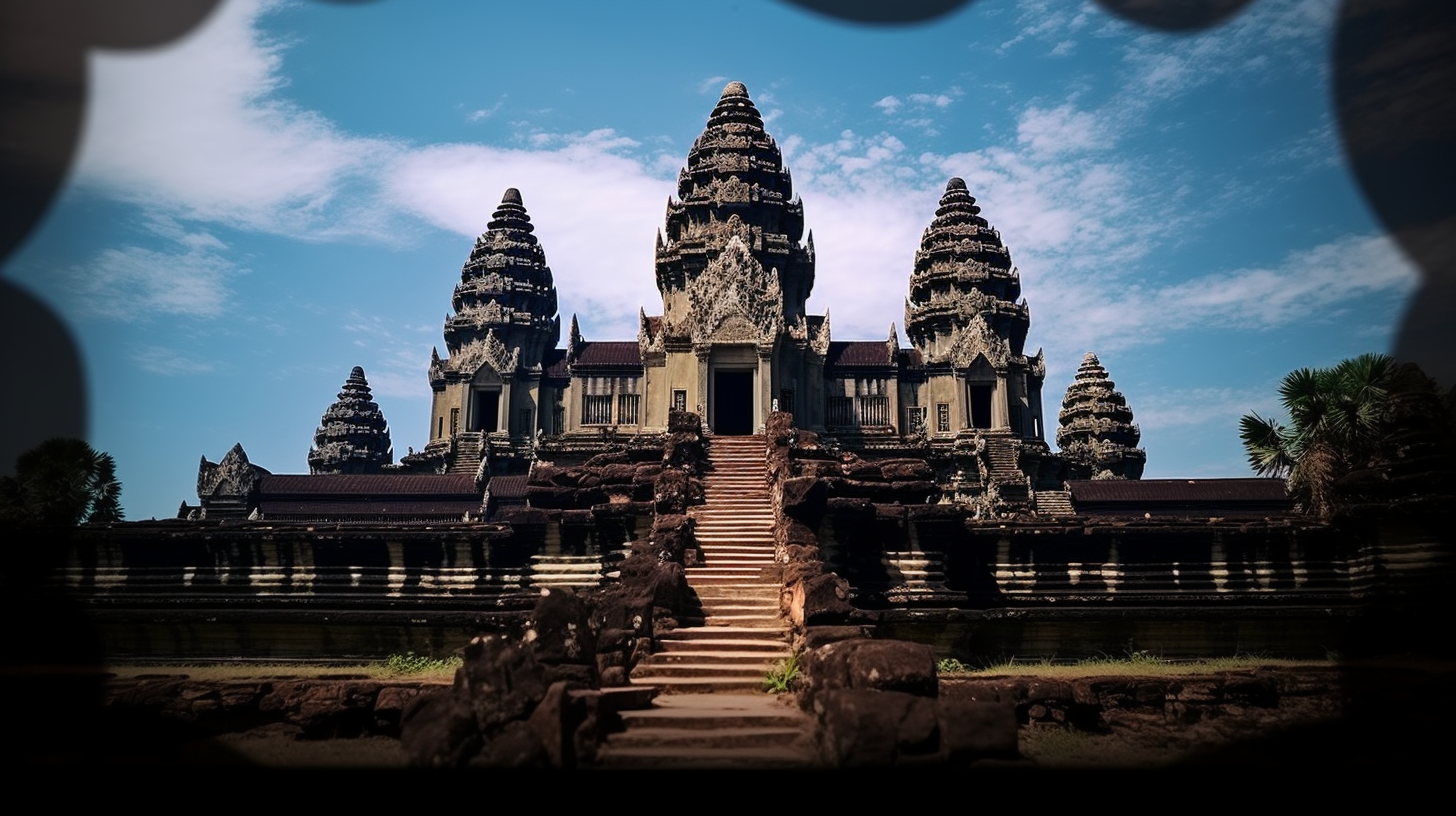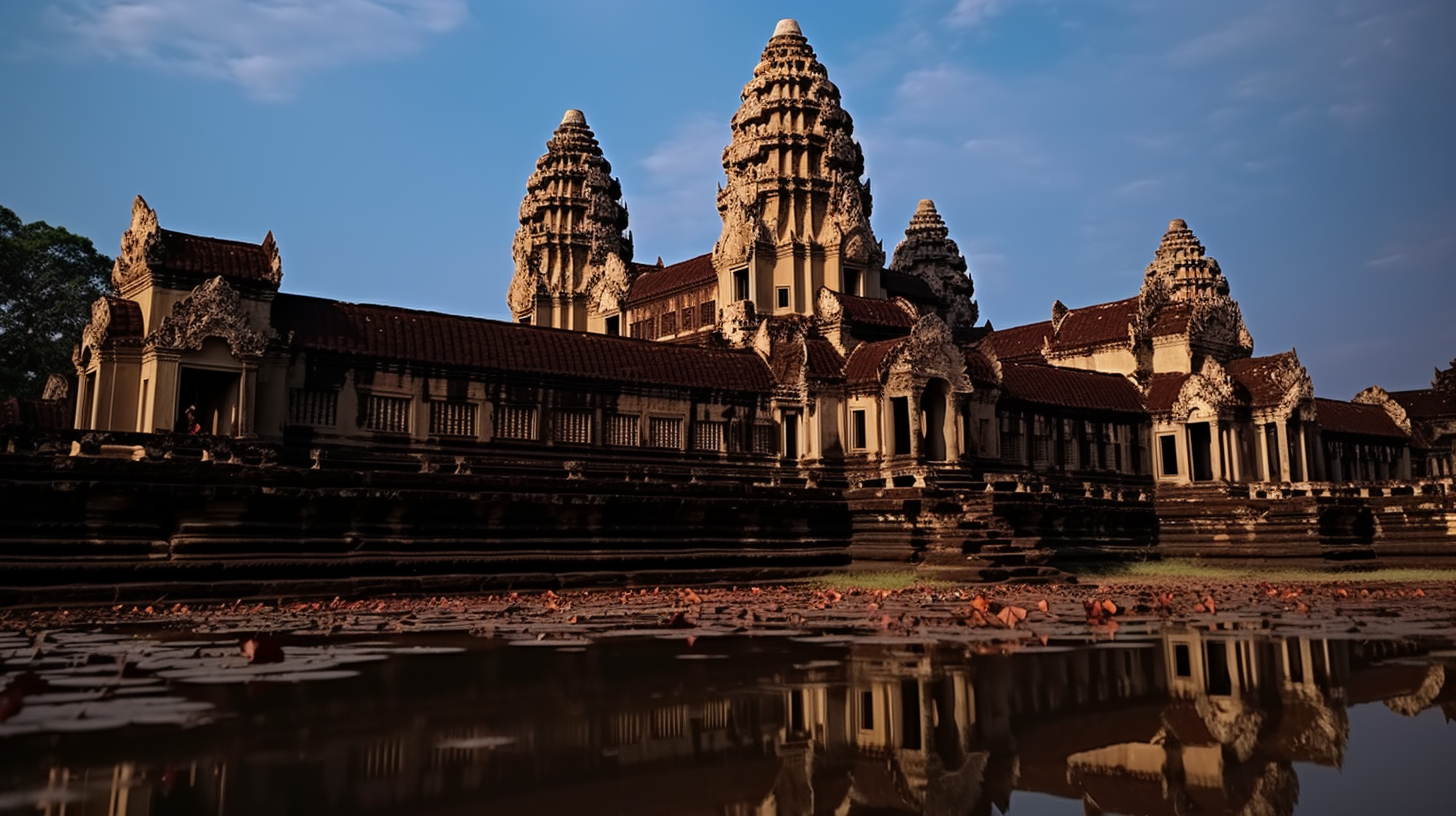Deep within the territory of Cambodia, on the outskirts of Siem Reap, stands Angkor Wat – an immense structure that has intrigued historians, archaeologists, and mythologists for generations. This vast temple complex, stretching nearly a mile on all sides, has consistently held a spellbinding allure.
While traditional belief among archaeologists dates its origins to the 12th century A.D., Cambodian folklore traces its beginnings back even further, to 600 B.C.
Local tales suggest that Angkor Wat wasn’t just the work of human hands but was instead crafted by a being that straddled the realms of mortals and deities.
The legend tells of Priya Pisnakar, the architect’s mother, descending from a celestial realm beyond ours, longing to reunite with her son in her heavenly home. This captivating narrative is only one of the many enigmas surrounding Angkor Wat.

In 1996, John Grigsby, a devoted researcher and writer, stumbled upon a remarkable alignment within Angkor Wat that has left experts and enthusiasts alike in awe. Grigsby’s discovery unveiled a striking connection between Angkor Wat and the Draco constellation, named after the Latin word for “dragon.”
By overlaying a map of the Draco constellation onto Angkor Wat’s layout, Grigsby illuminated how various structures within the temple complex perfectly matched the primary stars of the Draco constellation.
The immediate question arises: what significance does this cosmic alignment carry? Why did the creators of Angkor Wat go to such lengths to mirror the Draco constellation?
Some scholars suggest that this alignment could have served as a symbolic gesture, displaying to the local population the celestial lineage of their makers and guides. Constructing a monumental structure resembling their stellar origins would vividly communicate their extraterrestrial heritage.
The correlation between Angkor Wat and the Draco constellation goes beyond mere architectural resemblance. The temple features depictions of dragon-like creatures, suggesting a profound connection between Angkor Wat and the Draco constellation. In South Asian traditions, these creatures, known as nagas, hold deep symbolic meanings.

Regarded as potent beings, shape-shifters, and bearers of wisdom and knowledge, these nagas may symbolize the inhabitants of the Draco constellation or advanced extraterrestrial entities.
Adding to the intrigue of this celestial correlation is that Angkor Wat isn’t the only ancient site associated with Draco. Across the globe, in Ohio, the Native American Serpent Mound aligns precisely with Draco.
Similarly, in ancient Egypt, the pyramids were strategically positioned so that their entrance aligned with Draco’s main star, Alva Draconis, ensuring its visibility at night. These alignments hint at the fascinating idea that the Draco constellation influenced the development of dragon folklore in various cultures.
The widespread existence of dragon myths worldwide has sparked speculation that these mythical beings could have been extraterrestrial visitors from a planet within the Draco constellation. This intriguing hypothesis suggests that ancient civilizations witnessed their arrival, immortalizing them in their myths and legends.
Watch the captivating video below:
Exploring these ancient mysteries prompts us to reflect on whether esoteric knowledge about our cosmic origins has always resided in humanity’s shared consciousness. Could it be that our fascination with celestial alignments and dragons echoes this ancient wisdom?
While untangling the mysteries of Angkor Wat and its link to the Draco constellation may present challenges, it undoubtedly stands as a testament to the lasting allure of ancient enigmas that continue to capture our imagination.
